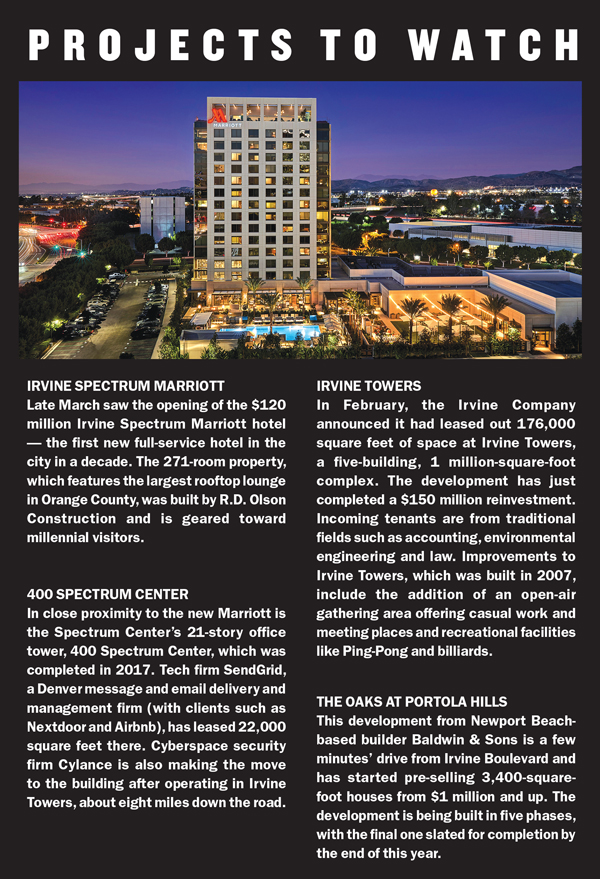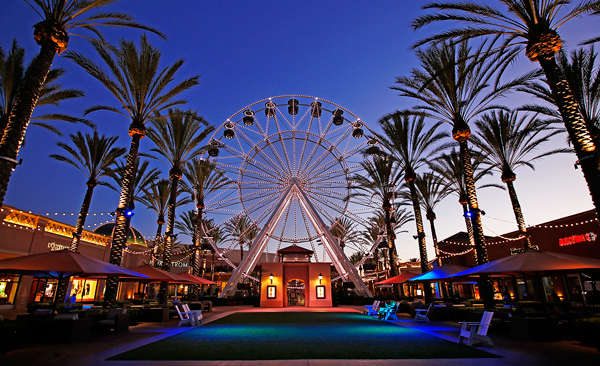In early April, Irvine realtor Jim Watson only had about $15 million worth of inventory, mostly single-family houses ranging in price from $1.5 to $5 million. This was not a good thing.
“I had double that last year,” said Watson, a Compass broker. “People are hunkering down and not selling.”
That poses a big problem for those looking to buy homes — and the brokers working with them — in Irvine, the business hub of Orange County.
Given Irvine’s allure and the relative affordability of its home prices — at least compared with such chic coastal neighbors as Newport Beach and Laguna Beach — demand for homes is high. For the first quarter of 2018, according to MLS figures, the median price for an Irvine residence — across single-family homes and condos — was $938,000. This compares with about $2.5 million for both Newport and Laguna in the same quarter.
But there just isn’t enough inventory to fulfill the demand. Watson said that during the first quarter of 2018, according to figures provided by the MLS, there were just 1,159 listings in Irvine, a 15 percent drop over the same period two years ago. He expects the number to shrink even further the rest of the year.
Realtors say that new master-planned communities currently in development are likely to buoy supply, but even still, builders may not be able to keep up with demand. Karim Wahba of the Realty One Group recently took a client to see a new master-planned development, Reserve at Orchard Hills, where homes have a starting price of $1.3 million and won’t be move-in ready for a couple of years.
“There was a waiting list,” said Wahba. “And this was before any upgrades or landscaping.”
But, as Watson referenced, there’s another factor straining supply: the “move-up” buyer who is now in a 30-year fixed mortgage with an interest rate of about 3 percent and who, in the broker’s words, is “loving their low interest rates, are satisfied with their homes” and don’t want to risk selling and trying to find a new place in an inventory-challenged market.

The Spectrum Marriott
Conversely, the rising interest rate is also motivating buyers to get while the getting is good. “There has been heightened urgency among buyers starting at the beginning of this year,” Watson said, citing higher interest rates as a possible cause. “When people see the rates going up, they figure they should buy now before waiting until they go up even more.”
And with more companies in the tech field looking to set up shop in Irvine, a well-priced home can be snapped up in no time. “Anything below $1.5 million that is a good-looking house is bringing in multiple offers,” said Wahba.
However, the upper tier of the market is seeing significantly less action. “Anything above $2 million is appreciating at a lower rate; in the luxury market, there is more supply than demand. Basically, it’s a tale of two markets within the same city,” he said.
The lowest-priced home (including single-family homes, semi-detached properties and condos) that sold in Irvine in the first quarter of 2018 went for $622,500. At the same time last year, the least expensive home sold for $486,000.
There’s good reason for the continued interest in the city, which was named after James Irvine, a landowner who, with three business partners, acquired 120,000 acres of what was ranch land in 1864. In addition to its good schools and high safety ratings, Irvine is considered a marvel of master planning. It’s home to a University of California campus and headquarters to large-scale corporations such as Verizon, Broadcom and Allergan.
Like other parts of Orange County, the city had also been a hot market for deep-pocketed international buyers — particularly those from China, said Watson. However, with the Chinese government clamping down on capital leaving the country (see page 30), brokers can’t count on that clientele to buy the ultra-high-end homes that aren’t moving.
“The Chinese buyers would come in and pay cash, and that certainly helped drive prices up from about 2013 to today,” said Watson. “That’s tapered off quite a bit and is now nothing like it was back then.”
